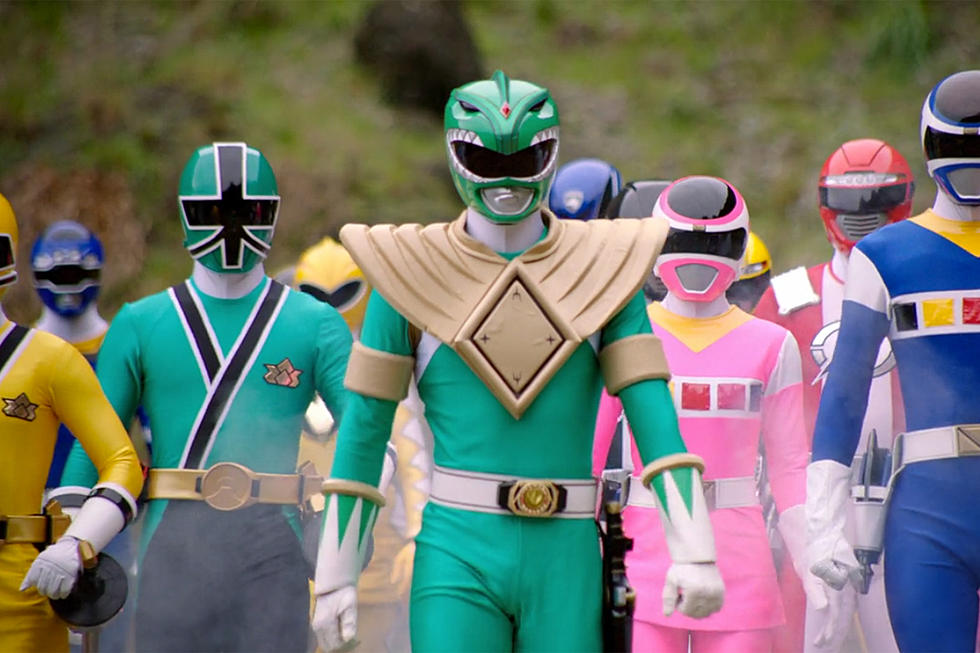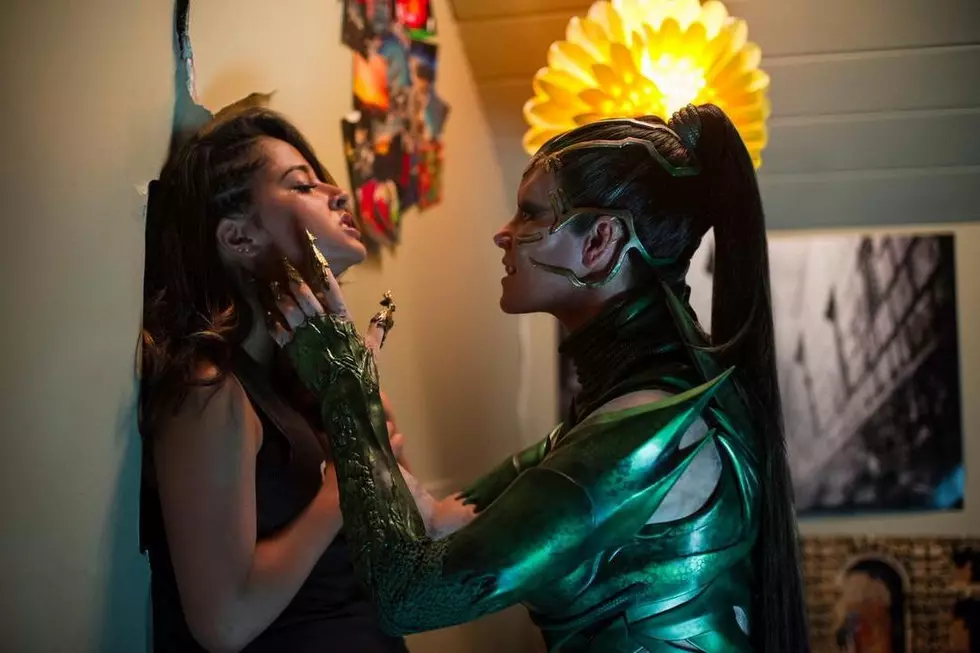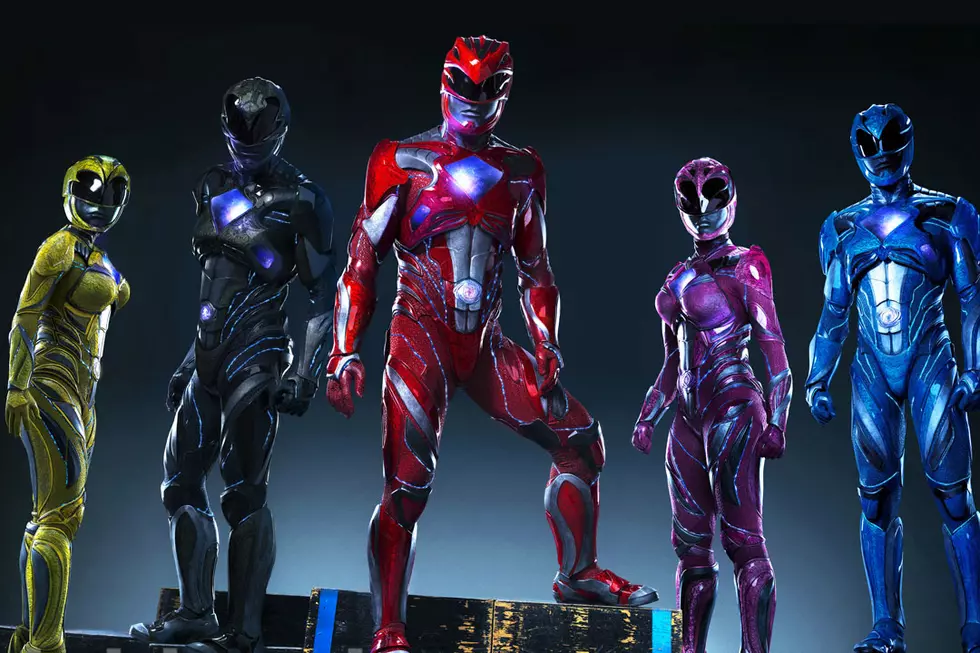
Ask Chris #249: In Defense Of Go-Busters
Q: Are there any missed opportunities in the way Super Sentai has been adapted for America? - @franzferdinand2
A: When you consider how weird it is that Power Rangers even exists in the form that it does, as this adaptation that, more often than not, has almost nothing in common with its source material other than a focus on problems that can only be solved with giant robot dinosaurs, it gets pretty difficult to figure out things that they could've done differently. I mean, when you get right down to it, they did almost everything they could've done, from stitching together pieces of multiple series into one show to throwing out everything except the robot fights and rebuilding the plot from scratch, all the way to trying to stick as close to the source as they could.
But that said, there's one big missed opportunity that stands out, and it's something that happened just this year: They didn't do an American adaptation of Go-Busters.
For those of you who don't spend all of your time watching TV shows that were made for Japanese children, Tokumei Sentai Go-Busters, which translates to something like Special Missions Task Force Go-Busters, was 2012's installment of the Super Sentai series, and it's the first one since 1994 that wasn't adapted for Power Rangers. When it came time to follow up on Super Megaforce, which adapted the pirate-themed Kaizoku Sentai Gokaiger, the producers of Power Rangers skipped over Go-Busters and went straight to the next entry in the franchise, Zyuden Sentai Kyoryuger, which in turn became Power Rangers Dino Charge.
Bear with me for a second here, I promise this is going to get a little less confusing as we go on.
Anyway, as for why they decided not to go with it, I don't know if anyone except the people calling shots at Saban are really sure. I've been told that it has a lot to do with Go-Busters resulting in the lowest toy sales in the history of the franchise in Japan, and Kyoryuger providing the highest, but since the Bandai corporation has, for some reason, not CCed me on any internal memos, I don't know how true that is. What I can tell you is that when I went looking for fancy high-end action figures, Red Buster cost me about half as much as anyone else, and the Kyorugers literally change into their ranger forms by shooting dinosaur-shaped Nerf guns into the air. Just going by those two pieces of evidence, the story checks out.
Either way, it's a shame that Go-Busters never made it across the Pacific, because it's not just a great show in its own right, it also seems like it'd be an easy fit for American audiences. That's one of the weird quirks of the show, and one of the things that makes it so interesting: it feels more like Power Rangers than any other Sentai show I've seen.
A lot of that comes purely from a handful of phrases that get thrown around, like the fact that when the characters transform, their accessories loudly announce that "IT'S MORPHIN TIME" --- in American-accented English, no less --- and that the giant monsters the team fought were called "Megazords." But it's a little more than that, too.
So here's the plot: Go-Busters is set in a world --- or at least a city --- where pretty much everything runs on Enetron, a plentiful and clean energy source that has handily solved all of our dependencies on fossil fuels. The downside, of course, is that it has also attracted the attention of a sentient computer virus named Messiah, who is currently trapped in a dimension called Subspace and needs Enetron to break out and destroy the world. He can send monsters through to our dimension, and naturally, the only thing standing in their way are three teenagers who were bonded with robot partners called Buddyroids when their scientist parents were sucked into Subspace 13 years ago.
In order to keep Messiah from stealing Enetron from power plants, a government agency was formed that --- and you probably saw this one coming --- built giant transforming robots based on the Buddyroids, training those three kids as pilots since they're the only ones who can properly interface with them. The kids have been promised that they'll be able to go and rescue their families someday, but no one knows if anyone can even survive in subspace, let alone stay alive there for thirteen years. Oh, and the kids also have super-powers: Hiromu (Red Buster) can move at super-speed, Yoko (Yellow Buster) can jump super high, and Ryuji (Blue Buster) has super-strength, although each power has a drawback to go along with it. Ryuji, for instance, can overheat, turning into a violent and unstable jerk before he eventually passes out.
That about covers it, and while it's a little bit complicated, it does two things that I don't think any other Power Rangers series has actually done, two things that sound like they'd be absolutely awful: It goes out of its way to explain how things work, and it gives the series a more realistic approach --- for a very specific and very relative definition of "realistic." I mean, this is still a show for tiny babies where the Red Buster gets paralyzed with fear every time he sees a chicken, so let's not get too caught up in the gritty realism of color-coded teenagers with attitudes.
And again, those are things that seem like they'd be unnecessary at best, but in practice, they end up being pretty great, if only because they take all the questions I had when I was a kid about how the Rangers actually work and answer them as part of the story.
This is something that happens a lot in superhero stories that have been going on for a while, and it's one of the best examples of an idea that can go very wrong, very easily. In the best case, you get a cool little addition to the story, like that episode of Batman: The Animated Series where you find out about that racecar mechanic who helps build the Batmobiles, but even then, you're tugging at the strings in a way that tends to just lead to more questions, and you end up explaining things that never really needed to be explained in the first place. At the same time, kids are curious, and while it's really easy to get excited when you're watching a robot Tyrannosaurus rise up from a volcano, you're probably going to have that moment where you try to figure out how Zordon built those things when he's a head floating in a glass tube.
And don't say it was Alpha 5. He would've screwed those things up so bad that we'd all be speaking Moon Witch.
Point is, explanations for genre conventions are very easy to get wrong, and Go-Busters manages to pull it off in a very fun and very simple way. The giant robots that the team uses to fight the bad guys, for instance, don't just show up out of nowhere - we see them stored in hangars with massive ground crews keeping them running, and there's even a plot point about how they actually run on fuel --- Enetron, in this case --- and that it's possible to run out.
Again, it's never all that realistic --- they're still a government agency that has decided that the best thing to do would be to build a giant car that can turn into a cheetah or a samurai, but it lays down a set of rules that work with the genre conventions rather than trying to explain them away.
Even better, it actually answers the big one, the one question that I think everyone has about Super Sentai and Power Rangers: Why don't the bad guys just start with the giant monsters? They're just gonna end up making the monster grow really huge anyway, so why wait until the good guys have already beaten it once? Heck, why even keep going if they've already beaten it?
In Go-Busters, there's actually a reason for it, and it changes the dynamic in a really fun way. See, while Messiah can't get into our world, he can send a smaller, less powerful avatar named Enter - later joined by a competing lieutenant named Escape. Enter's got a couple of jobs --- outside of just being around to move the plot forward, I mean --- and one of them involves the Metavirus, a technological McGuffin that allows him to turn anything with electronics into a monster, a category that's broad enough to include everything from bulldozers to weight machines:
Under normal circumstances, this is the monster that the good guys would fight, blow up, and then fight again once it grew a couple hundred feet, but in Go-Busters, there's a twist to it: The human-sized monsters never actually grow. Instead, the Metavirus infection serves as an anchor point for Messiah to home in on from Subspace so that he can send the monsters that are already giant, and are too big to send through the dimensional barrier on their own. In the process, the giant monsters take on the characteristics of whatever was infected, although they're never quite the same as their smaller-scale counterparts.
it's a really cool idea, and it means that there are actual stakes to the fight with the monsters in the first act. In theory, at least, if the Go-Busters can defeat the smaller monster, they won't have to deal with the big one --- not that this happens a whole lot, they've still got toys to sell --- and as long as the smaller one is still out there, Messiah can keep sending in the larger ones.
In practice, this means that you can have two different fights at two different scales, and it all matters, even though it always ends with the big monster getting cut in half with a giant sword.
Plus, there's another really fun piece of the action that comes from that, which is that the crew back at Headquarters can monitor the transmissions and predict when the Megazords are going to arrive and start destroying the city, which leads to an actual on-screen countdown to when stuff is about to get real. They only do it as an actual real-time countdown a couple of times over the course of the series, but I can't even imagine seeing that as a kid and not getting super hyped up for that giant monster to show up.
What I'm getting at here is that it's a really good show, and as you might've already realized, it has a lot in common thematically with Power Rangers RPM. It's certainly a more optimistic setting than RPM's post-apocalyptic domed city, but it's a little more than just the idea of both shows revolving around a sentient computer virus, too. There's a similar approach to the idea of militarized Rangers, of showing someone actually building all the machines, and of dealing with darker themes without being cynical. In fact, it's enough to make me wonder whether all those reference to "morphin" and "Megazords" weren't an indication that Go-Busters was Super Sentai doing a take on RPM, which was about as different from its source material as you could possibly get.
And maybe that's why they skipped over it. Even with the more "realsitic" costumes and the ostensibly spy-themed weapons, it's easy to think that adapting Go-Busters would've covered the same ground as a previous show, and while the franchise is definitely not above that, one imagines that darker themes, militarized spec-ops teams and a villain named "Messiah" are a little harder to get mileage out of than ninjas and dinosaurs. Maybe it was the hassle of getting the suit actors for the Buddyroids to reshoot everything with a different cast. Heck, maybe it really was the toys.
Or maybe they'll end up doing it anyway. Chip Lynn, executive producer on the current Power Rangers series, has mentioned that while the decisions on what to adapt are made above his pay grade, he likes Go-Busters a lot, and while 2014's Ressha Sentai ToQger - literally the story of trains made of rainbows fighting evil with the power of imagination, which was about as far from "dark" as you could get - was awesome, it also might not translate as well to an audience that's not all that into rail-based public transit. So maybe we'll see it after all.
I don't think it's likely, but, you know, it's Power Rangers. Stranger things have happened.
Ask Chris art by Erica Henderson. If you’ve got a question you’d like to see Chris tackle in a future column, just send it to @theisb on Twitter with the hashtag #AskChris.
More From ComicsAlliance









